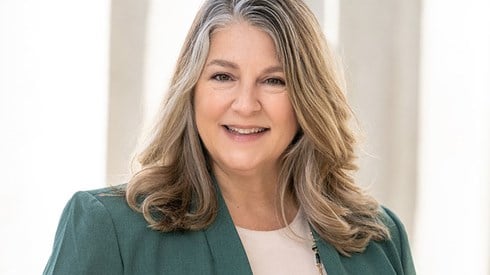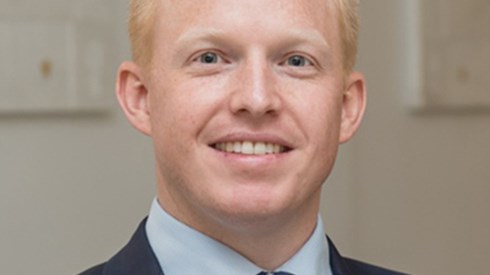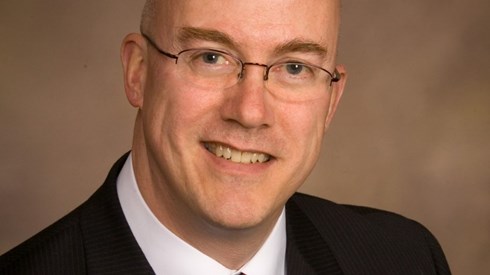It's Not about the Numbers, It's the Quality, Says Sandy Bigglestone

January 22, 2020

For decades, Vermont has been, by far, the largest captive insurance domicile in the United States. That position, says Sandy Bigglestone, director of captive insurance at the Department of Financial Regulation (DFR), with its rich captive resources, will continue. At the same time, Ms. Bigglestone, who has been a Vermont captive regulator for more than 2 decades, expects, with conditions tightening in the commercial market, for captives to take on more risks.
When did you join the Captive Insurance Division of the Vermont Department of Financial Regulation? What did you do previously? What is your current title?
I started with the Captive Insurance Division at the Vermont Department of Insurance in August 1997. My first week of work was during the Vermont Captive Insurance Association conference, so I immediately fell in love with the industry because I knew I was part of something great for Vermont. I came to the department from public accounting, and prior to that, I worked in hospital finance. I started as an examiner, and my current role/title is director of captive insurance.
As director of captive insurance, what are your responsibilities with the Vermont Department of Financial Regulation Captive Insurance Division?
My role serves as principal staff to the deputy commissioner of captive insurance in the management of regulatory operations, and my responsibilities include the review of new companies for licensing, the review of business plan changes for existing companies, legislative initiatives, educational initiatives, and participation in the National Association of Insurance Commissioners (NAIC) committees, subcommittees, and working groups. And then there are the "other duties as assigned" part of my job description!
For many years, Vermont has been, by far, the largest captive insurance domicile in the United States, as well as the third largest in the world. Do you expect Vermont to continue to hold those positions, and, if so, why?
I do expect Vermont to remain as leading domicile in captive insurance. Vermont's attributes hold a great deal of value to the companies that choose to do business here. The industry in Vermont is represented by some of the best professionals in the business—captive managers, auditors, actuaries, lawyers, bankers, investment managers—making Vermont a center of financial excellence for captive insurance. Our standards and values play an important part in the success of the industry, and we work hard to maintain the good reputation we have earned over the past 39 years.
The Vermont DFR consistently looks for ways to make improvements in regulatory practices and to update laws and regulations to allow for innovation or stay current with industry best practices. As regulators, we aim to work at the speed of business. To regulate effectively, the division has a staff of 30 professionals, most of whom are examiners and analysts, a structure that has worked well for controlling the cost of examinations. The industry has enjoyed division leadership that is experienced, visible, accessible, and responsive. Vermont's industry is further supported by its executive and legislative branches of state government, a marketing arm of the state in the Agency of Commerce and Community Development, and the largest and most influential captive insurance association in the world, the Vermont Captive Insurance Association. These are all great reasons to continue to attract quality business to Vermont.
In recent years, the growth in the number of Vermont captives has been, like many other domiciles, modest. Do you expect captive growth in Vermont to accelerate as conditions tighten in the traditional market?
Perhaps a bit of acceleration can be expected. With 22 new captives licensed in 2019 and 4 already in 2020, I'd say Vermont is doing as well as ever. Besides, it's not about numbers; it's the quality of business we gain (and the companies that are already here continue to grow). With the market hardening, we will likely see our fair share of prospects. We have several solid new businesses in the pipeline stream and are feeling positive about the planned 2020 promotional efforts sponsored by Vermont's Department of Economic Development and the Vermont Captive Insurance Association. One such effort we will be participating in is a trade mission to Mexico, with the goal of educating and attracting Latin American businesses to Vermont.
Do you see risks taken on by Vermont captives changing in the years ahead?
With pricing increases in the commercial marketplace, captive owners will likely retain more risk, plus with lines of business, like cyber and terrorism, that are still emerging, captives may provide a good solution. For group-type captives, pricing pressures may be alleviated, aiding membership retention and growth.
Last year, Vermont lawmakers passed legislation that gives captives more time between mandatory financial examinations. Now, such exams generally are every 5 years, up from every 3 years under prior law. The 2019 legislation also gave captives the option to follow current investment rules or develop an alternative investment plan. Do you expect Vermont lawmakers to consider new legislative changes to the captive statute and, if so, what will those proposed changes be?
Every year the Vermont DFR introduces something to the Vermont lawmakers through a process that benefits the state and the industry. This year's bill contains housekeeping and other items that will allow us to regulate under a set of clarifying laws. The draft proposal includes the following.
- Amendment clarifying disclosures that an agency should make to policyholders of an agency captive
- Amendment allowing commissioner discretion in the amount of required surplus held by a dormant captive
- Amendments to allow separate accounts of protected cells
- Amendment to expand the investment requirements for sponsored captives and protected cells, allowing them to file an investment plan for regulatory approval (same as was allowed for risk retention groups in the 2019 legislation and consistent with NAIC accreditation standards)
Aside from being the largest US captive domicile, Vermont, with about 90 risk retention groups, has, by far, more risk retention groups (RRGs) than any other domicile. What are the reasons that so many RRGs have been set up in Vermont?
Vermont was one of the first states to embrace risk retention groups and recognize the unique purpose for which they are formed. In the 1980s, risk retention groups were created under a federal act based on a market crisis. Today, risk retention groups represent a vital mechanism for risk financing and risk management for its members. Vermont has been licensing and regulating risk retention groups since the federal act was implemented. We have the experience and the dedicated resources to regulate them appropriately, so if new formations are being evaluated, we hope we will be on the list of domiciles they consider.
That said, the number of RRGs—currently about 220—is down significantly from a decade ago when the number of RRGs peaked at 260 in 2008. Do you see that number increasing in the years ahead, and, if so, why?
I think it remains to be seen. The hardening market could cause an uptick in formations, or existing risk retention groups will expand membership. Whenever there are liability market issues—availability, affordability, and capacity—a risk retention group is one of several options for organizations. Risk retention groups are not an inexpensive undertaking, so owners/members should have a long-term strategy. The keys to success will include maintaining reasonable pricing models and a high level of discipline. Risk retention groups that became more service oriented during the soft market and maintained a healthy level of surplus will be well positioned to take on additional risk. New risk retention groups will have to manage, and regulators will have to monitor, the strain on capital if growth is excessive.
Looking more broadly, what are some of the challenges captives and their parents face today?
Factors may depend on the parent's industry, lines of business covered by the captive, and geography. The proliferation of US captive domiciles over the last decade has introduced more competition for market share, so the challenge for any parent company is making an informed choice. The captive insurance industry has faced various regulatory challenges, from federal agencies and state jurisdictions, whereby the captive insurance model, the interpretation of captive insurance, the legality of captive insurance, or the imposition of taxes and fees on businesses owning captive insurance companies is questioned or becomes a center of focus. The good news is that there are captive insurance associations and other parties that advocate for the business.
On the other hand, what do you think are the major opportunities captives have today?
Greater control and the opportunity to add value to the owner's business. Captives provide businesses a great deal of decision-making power for managing and financing their risk. The potential opportunities for insurance premiums savings, or profits gained from enhanced risk management, are funds that can be redirected back into risk management initiatives or provide resources to advance the parent's business purpose.
What advice would you give those entering the captive industry today?
Be prepared to really like the work and learn something all the time. Build a network, because there is so much talent to tap into and so many career avenues available. And, I suppose I should add "don't fear regulation." Captive insurers are regulated businesses, so an environment that includes reputable industry regulation that prioritizes solvency and recognizes the special purpose of captive insurance is good for everyone involved.
What has been your craziest day as a captive insurance regulator?
There may be too many to count, stories I can't share, or stories I've long forgotten, so at the risk of oversharing or undersharing, I'll tell you a travel story. We all have memories about 9/11, where we were, and what we were doing. I was in Washington, DC, working on an examination of a group captive. Being on Pennsylvania Avenue in DC on 9/11 was crazy indeed; however, I want to tell you about how I managed to get back home to Vermont. There were three of us on the examination; one coworker drove instead of flying. It was typical for this coworker to drive and because of his reputation as a crazy driver, no one ever chooses to ride with him. Airports were shut down. So, there I was, in DC, needing to get home. Easy decision: Get a ride with my coworker, right? Nope! I think I'd rather walk home. In fact, right up until the last moment before our "driver" was leaving for Vermont, I exhausted all possibilities for an alternative means of travel. There were no cars available to rent, no train tickets, and no bus tickets available to purchase. I even considered hiring a cab driver! I know I should have been more grateful for a ride, but I feared the experience of riding with him—and long distance, for that matter. I offered to drive, knowing that wasn't an option for him and his car. He informed us that he drives straight through on every trip, no stopping. So off we went, mile after mile, 12 hours, 3 McDonald's drive-throughs, other coworker sleeping in the back seat the entire time, many conversations later, we arrive home. Maybe I was still numb from the events of 9/11, or my coworker sensed my fear, because the drive wasn't so bad after all, and I was extremely grateful for the ride home and the company along the way.
On the other hand, what have you enjoyed most about being a captive regulator?
The opportunities I have had to connect with people in all facets, both inside and outside of the industry, and all the chances I have had to learn from them. There's always something to learn, and that never grows old with me.
Where do you see future captive growth occurring?
Hopefully, in Vermont. In terms of captive types, more single-parent or pure types captives, as well as groups and sponsored protected cells. Vermont added 4 new sponsored protected cell company licenses in 2019 and has over 200 active protected cells, so that's been an area of growth for us. In terms of lines of business, medical stop loss, property, and cyber to name a few. In terms of the industry, growth and depth of talent with more professionals entering or migrating to captive insurance.
Ms. Bigglestone is pictured above. (Courtesy photo.)
January 22, 2020




